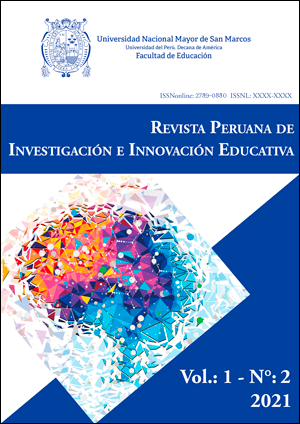Tensions Regarding the Digital DivideiIn Peruvian Education
DOI:
https://doi.org/10.15381/rpiiedu.v1i2.21039Keywords:
digital divide, educational inequality, technological tools access gap, Internet connection gapAbstract
The Covid-19 pandemic has exposed many deficiencies worldwide, such as the educational aspect because one of the measures was the change from the face-to-face scenario to the virtual one, in classes. Many students did not agree, due to ignorance of the technological tools and internet connection, proving educational inequity, mainly in Latin American countries 55% have been affected, where six out of ten households suffer from this need. The present study aims to show the inequality in digital education that is latent despite the efforts of educational policies implemented by governments. The research is classified as basic, qualitative research with a systematic design; In addition, a sample of normative documents from Minedu and Unesco was considered, which address the problem of educational work in a health crisis and the digital society, respectively. In the results found, it was evidenced that there is a digital divide by economic level, geographical location: urban and rural, among others. It is concluded that the pandemic has discovered a lot of inequality in virtual education and it is considered that technology and internet connection are of vital importance for closing the digital divide in Peru.
Downloads
Published
Issue
Section
License
Copyright (c) 2021 Carlos Narcizo Tarazona

This work is licensed under a Creative Commons Attribution 4.0 International License.
AUTHORS RETAIN THEIR RIGHTS:
The authors retain their trademark and patent rights, and also on any process or procedure described in the article.
The authors retain the right to share, copy, distribute, execute and publicly communicate the article published in Revista peruana de investigación e innovación educativa (for example, place it in an institutional repository or publish it in a book), with an acknowledgment of its first publication in Revista peruana de investigación e innovación educativa.
The authors retain the right to make a subsequent publication of their work, to use the article or any part of it (for example: a compilation of their works, notes for conferences, thesis, or for a book), provided that they indicate its first publication in Revista peruana de investigación e innovación educativa (referencing authors of the work, journal, volume, number and date).






